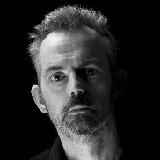Paul Shields is Photographer, Information Services at University of York. He attended the IS&T Archiving Conference with support from the DPC Career Development Fund, which is funded by DPC Supporters.
I was asked to write a report about my attendance at the Society for Imaging Science and Technology (IS&T) Archiving 2023 Conference in Oslo on 19-23 June. The difficulty with this is that there were so many fascinating individual talks from the digitisation of materials in Notre Dame after the devastating fire, the use of smell in how we perceive and enjoy museums and the renovation and care for the Munch murals in the very building we were having the conference in.
So rather than focusing on a single talk I have decided to write about two threads that ran through the conference which came up in talks and networking discussions.
The first topic was the EU-funded Cultural Heritage Analysis for New Generations (CHANGE) program.
The CHANGE project will train a new generation of early stage researchers towards a common goal, namely the assessment of changes of tangible cultural heritage (CH) objects and their monitoring in the atmosphere and/or during their conservation treatment using multimodal imaging techniques in complement to more traditional analytical techniques.
A number of CHANGE researchers presented during the Archiving Conference. There were talks from many of the researchers about the various projects, research and work that they have been involved in from multispectral imaging, 3D modelling RTI, etc.
The second topic which arose was the financial disparity between institutions and how that is reflected in their ability to produce work of a sufficient archival standard. Several speakers talked about how privileged they were to know that they had sufficient funding for equipment, staff and space for what they require whereas those from smaller institutions, museums and universities struggle to get the resources to acquire high quality specialist equipment.
Where these two threads intertwined was in the work that some of the researchers were involved in.
We had a talk on free open source Spectral Image processing software, a simple Ultraviolet induced visible fluorescent target or a low cost alternative to a Spectralon, a lens characterisation method for low budget high quality museum photography, how to build a low cost spectral imaging light source and many others looking at ways for smaller institutions or those in the developing world to have control over their own collections.
For those with limited funds it is hard trying to explain, to non-technical managers, why a £20,000 camera is substantially better than a £5,000 camera but this is compounded by the addition of very expensive software and accessories. If the next generation of people working in the archiving sector are looking at solutions to these problems then the future could be a bit brighter for those of us who have had to explain that you can’t “just do it with a phone.”
Acknowledgements
The Career Development Fund is sponsored by the DPC’s Supporters who recognize the benefit and seek to support a connected and trained digital preservation workforce. We gratefully acknowledge their financial support to this programme and ask applicants to acknowledge that support in any communications that result. At the time of writing, the Career Development Fund is supported by Arkivum, Artefactual Systems Inc., AVP, Ex Libris, Iron Mountain, Libnova, Max Communications, Preservica and Twist Bioscience. A full list of supporters is online here.










































































































































